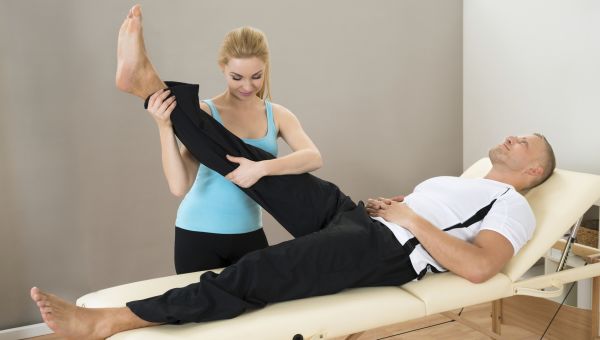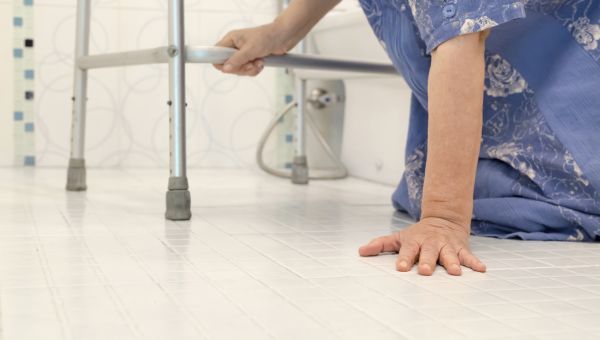7 surprising conditions treated by physical therapy
Could PT be the unexpected fix for one of your health issues?

Physical therapists (PTs) help people get their strength back after major surgeries and accidents by encouraging them do a little more activity each day. But did you know: a PT might be able to help you improve your chronic medical problems too.
“PTs are exercise and movement specialists. And there’s a whole assortment of medical conditions that can benefit from the appropriate form of exercise,” says Elizabeth Kevil, DPT, a Physical Therapist and Certified Strength and Conditioning Specialist at Sky Ridge Medical Center in Lone Tree, Colorado.
Here are 7 surprising conditions that physical therapy can help treat.

Cancer
Between 70 to 100 percent of people with cancer live with severe exhaustion, or fatigue. It may be a side effect of chemotherapy drugs or a symptom of the cancer itself.
Staying in bed for long stretches of time because of fatigue can make you lose muscle tone, called deconditioning. That muscle loss can make basic activities like walking or showering feel overwhelming.
But getting more rest isn’t always the solution. In fact, exercise may be the most effective way to combat cancer-related exhaustion, according to a 2017 review of 113 studies from JAMA Oncology.
“When someone’s battling deconditioning after radiation or chemo, they often don’t know where to begin with exercise. A physical therapist will help get you moving again by educating you on safe, effective motions that will build muscle, but won’t interfere with your diagnosis or treatment,” says Kevil.

Chronic headaches
If your headaches come on so frequently or severely that they make it difficult to complete everyday activities, a physical therapist may be able to help.
There are many different types of chronic headaches, but physical therapy might improve your symptoms if they’re caused by:
- Stress or muscle tension
- Poor posture
- Muscle or joint problems involving the head, neck or jaw
A physical therapist can teach you muscle relaxation techniques to use when you feel a headache coming on. Relaxing key muscles can ease the pain or stop a headache in its tracks. PTs can even help keep headaches at bay by stretching and strengthening those muscles over time.

Bladder leakage
Up to 45 percent of women have some form of bladder leakage. Men experience leaks too, but women are more prone to them because of physical changes from childbirth and menopause.
Bladder leaks can happen when you cough, laugh, run or as you race to the bathroom.
“When that starts, many people think they need to use a bladder leakage protection product and modify their lifestyle. But physical therapy actually can address leaks by strengthening the pelvic floor, hip and core muscles that help to start and stop the flow of urine,” explains Kevil. Your PT may also advise you to perform Kegels, a type of pelvic floor exercise that you can do on your own between sessions.

Diabetes
People with diabetes may develop nerve damage in their feet, called peripheral neuropathy. Nerve damage often causes burning, “pins and needles” or numbness, which can turn everyday tasks like pulling up your socks into a painful ordeal.
“When you start having altered feelings in your legs and feet, you’re also at risk for falls and injuries because your walking pattern may change. PT helps with that by improving the quality and safety of your walking,” says Kevil.
Safety matters because if you were to stub your toe or cut your foot, you might not notice it if your feet are numb. Diabetes slows down wound healing too, so protecting your feet should be a top priority.

Dizziness
“We also treat vertigo, which is when someone feels the world spinning. They're often unsteady, imbalanced,” says Kevil.
Therapists can help fix an inner-ear problem that often causes vertigo: vertigo may develop when tiny crystals get detached from their usual place on your inner ear. They land in your inner ear canals, where they wind up touching and confusing the nerves that control balance.
A therapist will move your head through a series of motions that help to either dissolve or shift the crystals back into place. The method is very effective, curing about 80 percent of cases.

Parkinson’s Disease
Parkinson’s disease is a disorder that makes it difficult for the brain to produce and control the chemical dopamine, which is responsible for body movements.
People with Parkinson’s may:
- Have a hard time completing daily activities like dressing and showering
- Be unable to swing their arms or take big steps, causing them to shuffle while walking
- Develop poor balance and posture
“PT can address the adverse movements from Parkinson’s. We help you to stay more balanced, have better posture and walk more smoothly to prevent falls. We also help with flexibility because people become really stiff in many cases,” says Kevil.

Home safety
If you’d like to remain in your home as you age, but you’ve been having falls or injuries, a physical therapist can visit you to figure out why and find a solution.
A PT can assess your home to see if it needs better lighting, fewer floor rugs, which can be a tripping hazard or maybe a different layout for furniture to take away the obstacles that are making you fall, explains Kevil.
During a home visit, a PT might also realize that you need:
- Glasses
- A safer pair of shoes
- A walker or cane
- A handrail on your entry stairs
